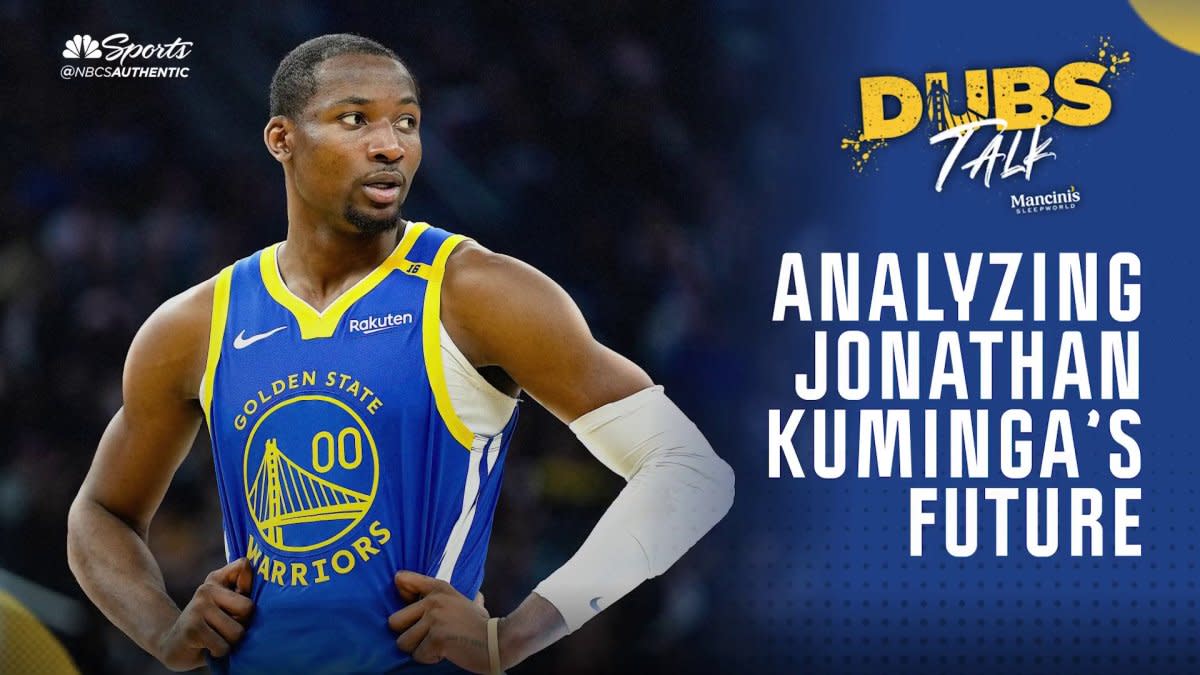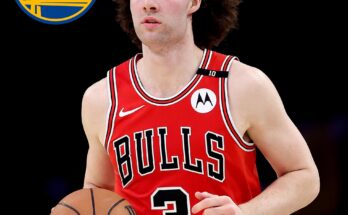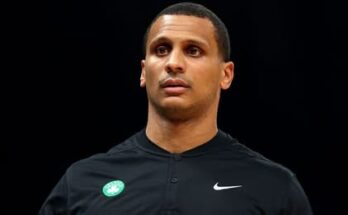Jonathan Kuminga’s Likely Reunion with Warriors Poised to Spark Unwanted Spectacle Amid Growing Tensions
The prospect of Jonathan Kuminga reuniting with the Golden State Warriors has stirred significant anticipation, but it also raises concerns about the potential for an unwanted spectacle that could overshadow both the team’s goals and Kuminga’s development. As discussions progress around Kuminga’s possible return, insiders and analysts alike warn that the reunion, while filled with promise, may ignite tensions and distractions within the Warriors’ organization and fan base. This complex situation highlights the challenges faced by NBA teams balancing player dynamics, public expectations, and competitive ambitions.
Jonathan Kuminga’s journey with the Warriors has been marked by high hopes and fluctuating circumstances. Drafted as a top prospect, Kuminga’s raw talent and athleticism quickly made him a player to watch. However, his tenure with Golden State has included periods of inconsistent playing time, fluctuating roles, and occasional questions about his fit within the team’s established core. These factors have contributed to a complex relationship between player, team, and supporters, setting the stage for a reunion that is anything but straightforward.
The potential reunion now emerging in trade talks or roster decisions has sparked a flurry of reactions. On one hand, Kuminga’s return could bolster the Warriors’ depth and provide a youthful energy boost, qualities that are invaluable in a grueling NBA season. His defensive versatility and physical gifts align well with Golden State’s style, and re-integrating him could offer new strategic options for coaches. Moreover, Kuminga’s familiarity with the organization, coaching staff, and team culture might ease his transition back, facilitating quicker chemistry development.
Yet, despite these positives, the situation carries risks of an unwanted spectacle that could prove disruptive. The public discourse surrounding Kuminga’s possible return has already been marked by divided opinions. Some fans and commentators question whether reuniting with Kuminga is the best move, citing concerns about previous inconsistencies, attitude reports, or fit within the current roster. These doubts risk fueling criticism, media scrutiny, and heightened expectations that could place additional pressure on both Kuminga and the Warriors.
Complicating matters further are reports of underlying tensions within the team’s locker room and management. While specifics remain confidential, insiders hint at unresolved issues related to Kuminga’s past interactions with teammates and coaching staff. Reintroducing him without clear strategies for addressing these dynamics might risk reigniting friction, affecting team cohesion and morale. In high-stakes environments such as Golden State’s pursuit of championships, even subtle disruptions can have outsized consequences on performance.
From the Warriors’ front office perspective, the decision to bring Kuminga back involves balancing short-term needs with long-term vision. On paper, the reunion offers a blend of continuity and potential upside, but the leadership must carefully weigh whether the benefits outweigh the risks of controversy and distraction. Executives are reportedly conducting extensive evaluations, factoring in not only basketball fit but also psychological and cultural impacts. They recognize that managing player relationships and public perception is as critical as on-court performance.
For Kuminga, the potential return to Golden State is a pivotal moment in his career. The opportunity to reset and demonstrate growth within a familiar yet demanding environment carries both promise and pressure. Success hinges on his ability to navigate expectations, rebuild trust, and deliver consistent performances. Failure to do so could intensify scrutiny and jeopardize his standing with the franchise. His approach to this reunion, including his professionalism, mindset, and work ethic, will be closely monitored by all stakeholders.
The media landscape surrounding this development has contributed to the narrative of an impending spectacle. Coverage ranges from optimistic projections of Kuminga’s resurgence to critical analyses questioning the wisdom of the reunion. Social media platforms have become battlegrounds for fan opinions, some of which verge on hostile. This cacophony of voices risks creating a charged atmosphere that may distract players and staff alike. Managing the message and maintaining focus within the organization will be essential to mitigating these challenges.
Moreover, the broader implications for the Warriors’ season are significant. The team is navigating a competitive Western Conference landscape where chemistry, stability, and focus are paramount. Any disruption—whether from off-court drama or internal conflicts—could undermine their championship aspirations. The timing of Kuminga’s return, amid other roster moves and ongoing performance pressures, adds complexity to an already delicate situation.
Coaching staff face the critical task of integrating Kuminga effectively while fostering a positive environment. Strategies may include clear communication of roles, targeted support to address past issues, and fostering accountability. The ability of coaches to manage personalities and expectations will influence how smoothly the reunion unfolds. Positive leadership could transform potential risks into strengths, but missteps might exacerbate tensions.
Fan engagement adds another layer of complexity. While some supporters are eager to see Kuminga back in a Warriors uniform, others remain skeptical or critical. Fan sentiment can impact player confidence and team atmosphere, particularly in the age of social media where public opinion spreads rapidly. The franchise’s communication strategy will play a key role in shaping fan perceptions and rallying support for the reunion.
In the context of NBA team dynamics, the Kuminga-Warriors situation exemplifies the intricate balance between talent management and organizational harmony. Player acquisitions and returns are never solely about athletic ability; they encompass personalities, histories, expectations, and public narratives. Successfully managing these elements requires astute leadership, clear vision, and often, a bit of diplomacy.
As the situation develops, all eyes will be on how the Golden State Warriors handle this potential reunion. Will they harness Kuminga’s abilities and integrate him smoothly, or will the risks of an unwanted spectacle overshadow the intended benefits? The outcome holds implications not only for the players and team involved but also serves as a case study in managing complex personnel decisions in professional sports.
In conclusion, Jonathan Kuminga’s likely reunion with the Golden State Warriors carries both promise and peril. While his talent and familiarity with the franchise offer tangible benefits, the potential for tensions, public scrutiny, and distractions creates the possibility of an unwanted spectacle. Navigating this delicate scenario will test the Warriors’ leadership, Kuminga’s professionalism, and the resilience of the team’s culture. As fans and analysts await further developments, the unfolding story underscores the multifaceted nature of modern NBA team-building and the high stakes involved in managing player relationships and expectations.



